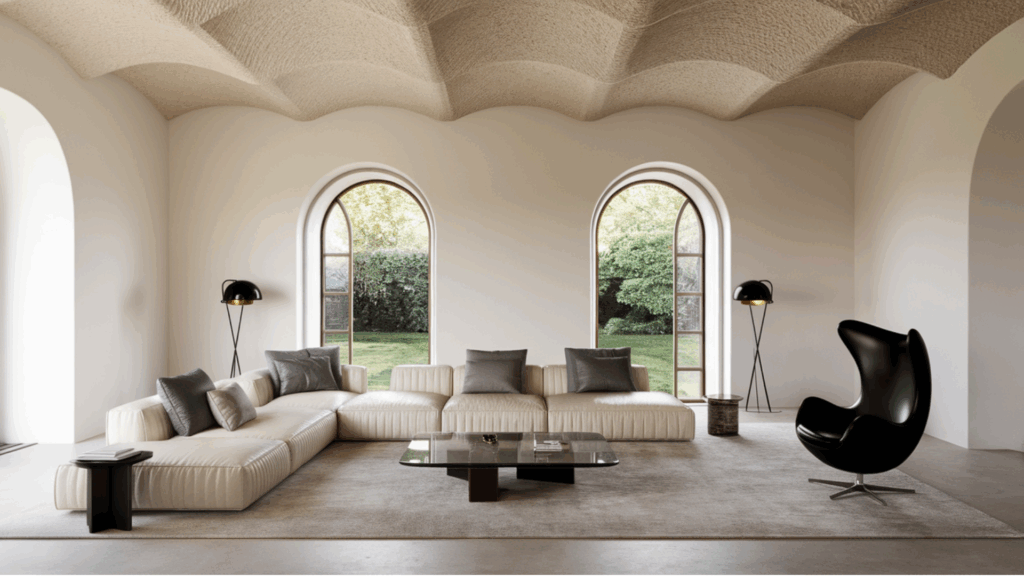Have you ever looked up and thought, “What’s going on with this bumpy ceiling?” Textured ceilings are everywhere, especially in homes built before the 2000s. But why?
Most homeowners wonder about these rough surfaces that seem to cover every room in older houses.
In this blog, you’ll find:
- Why contractors choose textured finishes
- The real reasons behind these uneven surfaces
- Smooth vs. textured ceiling pros and cons
I’ll break down the mystery behind these unexpected ceiling designs and give you practical insights you can trust.
If you’re a homeowner, renter, or just curious about interior design, my guide will help you understand what’s hanging right above your head.
Ready to uncover the truth about these unconventional ceilings? Let’s get started.
What Does It Mean When a Ceiling Is Textured?
When I first learned about ceiling textures, I was surprised by how many styles there are.
A textured ceiling is more than just a flat surface; it’s a design choice that adds interest to plain drywall.
Textures can include bumps, swirls, and patterns that give depth to an otherwise simple surface.
Contractors use special tools or spray materials to create these textures, adding character to a room. Each texture style is unique, like a fingerprint, so no two are exactly the same.
You might encounter:
- Popcorn texture: Looks like cottage cheese sprayed overhead
- Orange peel: Soft, subtle bumps resembling citrus skin
- Knockdown: Flattened peaks that create a subtle landscape
- Swirl patterns: Artistic twists that catch light dramatically
Ceiling textures are a simple way to add style and hide imperfections. Contractors often use them to cover up small flaws in the ceiling or to give a room a more finished look.
Some textures are purely decorative, while others help improve the overall appearance of the ceiling by masking minor issues from construction or age.
Why Are Ceilings Textured?
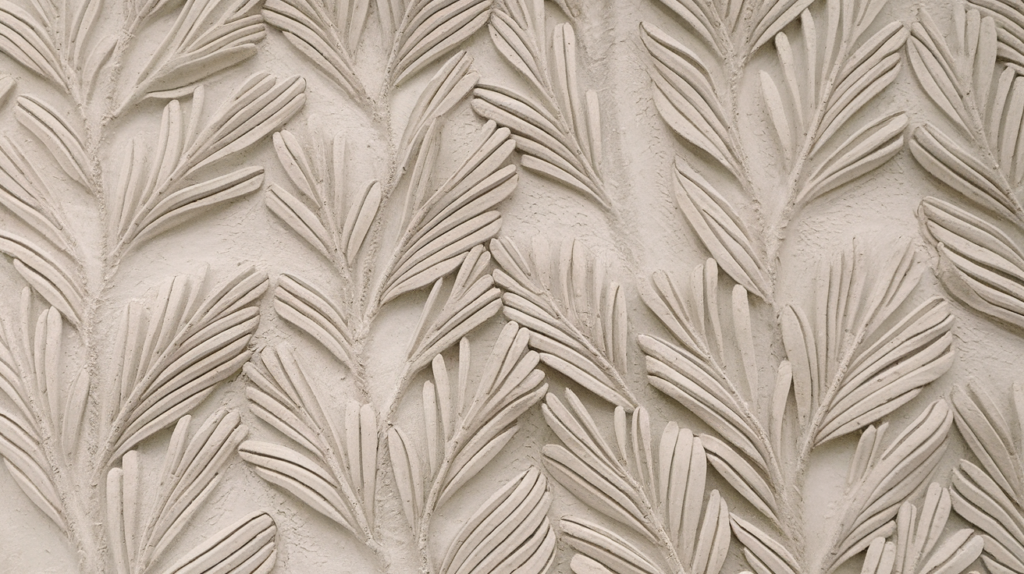
Ceiling textures are purposeful, not random. They serve multiple functions and help solve various issues. Below are some of the main reasons builders choose textured ceilings:
1. To Hide Flaws
Imagine hanging drywall. It’s not as easy as it looks. Seams, patches, and minor imperfections can make a ceiling look messy.
Texture becomes a magician’s trick, concealing those construction mistakes.
You won’t notice small errors when the ceiling looks intentionally bumpy and uneven.
2. To Save Time and Labor
Smooth ceilings require incredible skill and patience. Getting that perfect flat surface takes hours of careful sanding and multiple coats of compound.
Texture? Spray it on, and you’re done in minutes. Builders save time, and you save money on labor costs.
3. To Absorb Sound
Ever noticed how empty rooms echo? Textured ceilings are sound’s worst enemy. Those bumps and valleys catch sound waves, reducing noise bounce.
Bedrooms, home offices, and living rooms benefit from this acoustic magic. Less echo means more comfort.
4. To Add Character
Plain can be boring. Textures bring personality to plain spaces. A simple swirl or subtle orange peel can change a room from flat to fascinating.
It’s like giving your ceiling a unique outfit that complements the entire space.
5. To Reduce Light Glare
Textured ceilings scatter light instead, creating a softer, more pleasant room feel.
No more harsh glares from windows or overhead lights. Instead, you get a gentle, diffused lighting effect that’s easy on the eyes.
Fascinating how something as simple as ceiling texture can solve so many design challenges, right?
Textured vs. Smooth Ceilings
I’ve seen both types of ceilings up close, and trust me, they’re more different than you might think. Let’s see a clear breakdown to help you understand their pros and cons:
| Aspect | Textured Ceilings | Smooth Ceilings |
|---|---|---|
| Visual Impact | Hides imperfections | Highlights the room’s clean lines |
| Installation Time | Faster and cheaper | More time-consuming |
| Maintenance | Harder to clean, dust gets trapped | Easy to wipe down, shows every mark |
| Painting | Challenging to repaint evenly | Simple to repaint smoothly |
| Repair | Flaws blend in easily | Every small crack stands out |
| Home Value | Older home style | Preferred in new construction |
When comparing these options, I found that smooth ceilings offer a modern look, while textured ones give a more classic feel. However, both have their own appeal.
You might love the character of a textured ceiling, or you might want that sleek, updated look. Your choice depends on:
- Your home’s age
- Personal style
- Budget
- Maintenance willingness
Pro tip: If you’re selling your home, smooth ceilings often catch buyers’ eyes faster. But don’t stress, good design is about what makes you feel comfortable.
Different Types of Ceiling Textures
There are many ceiling textures, each adding a unique touch to your space. Here’s a look at some common treatments that can transform a room.
1. Popcorn Texture
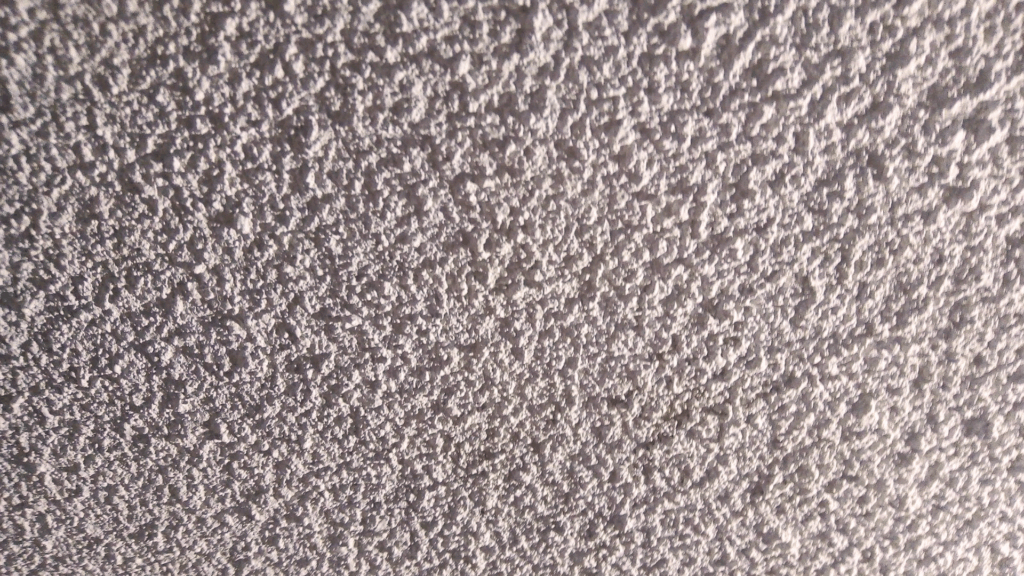
Popcorn texture looks just like its name suggests, thick and bumpy, resembling cottage cheese sprayed on the ceiling.
Popular in mid-century homes, it was often used to hide imperfections quickly.
Builders favored it for its ability to cover up construction flaws, making it common in older homes.
Quick to apply and affordable, popcorn texture was a go-to option for many years.
2. Knockdown Texture
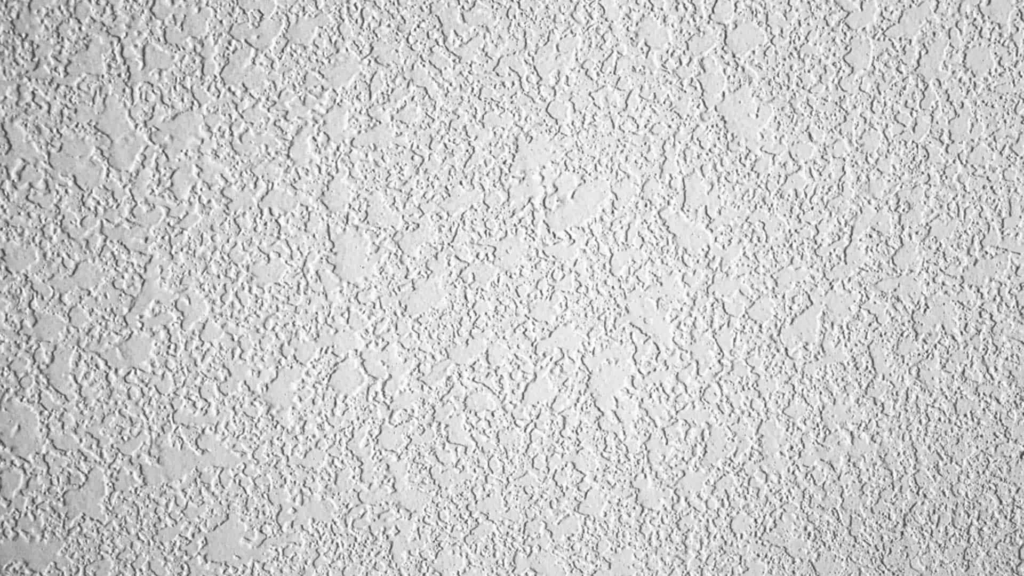
Knockdown is like a more refined version of popcorn texture. Contractors spray a base texture and then flatten the peaks with a trowel, resulting in a smooth, stucco-like finish.
This texture catches light beautifully, adding depth without being too rough. Homeowners like its modern look; it’s not too plain, but not too busy either.
3. Orange Peel Texture
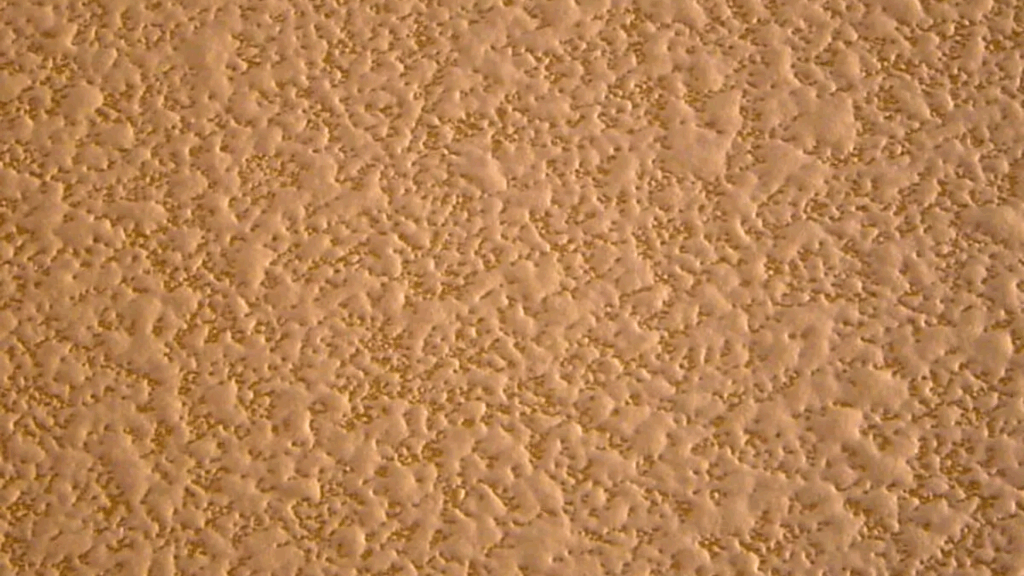
Orange peel texture resembles the skin of an orange, with fine, light dimples covering the surface in a subtle pattern.
This texture blends smoothness with a touch of character, offering just enough interest to complete a room without being too bold or flat.
It’s a great choice for adding texture without overwhelming the space.
4. Swirl Texture
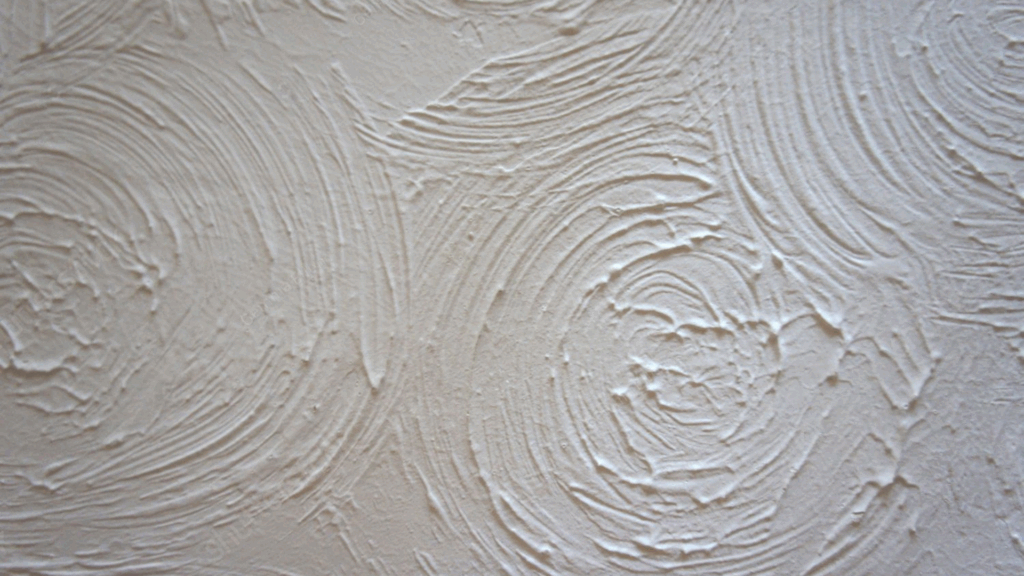
Swirl texture is applied by hand using a trowel, creating unique patterns across the ceiling. Contractors can make tight spirals or loose, flowing curves, resulting in a one-of-a-kind look.
Each swirl texture is different, making your space feel personalized and distinct.
5. Stomp Brush Texture
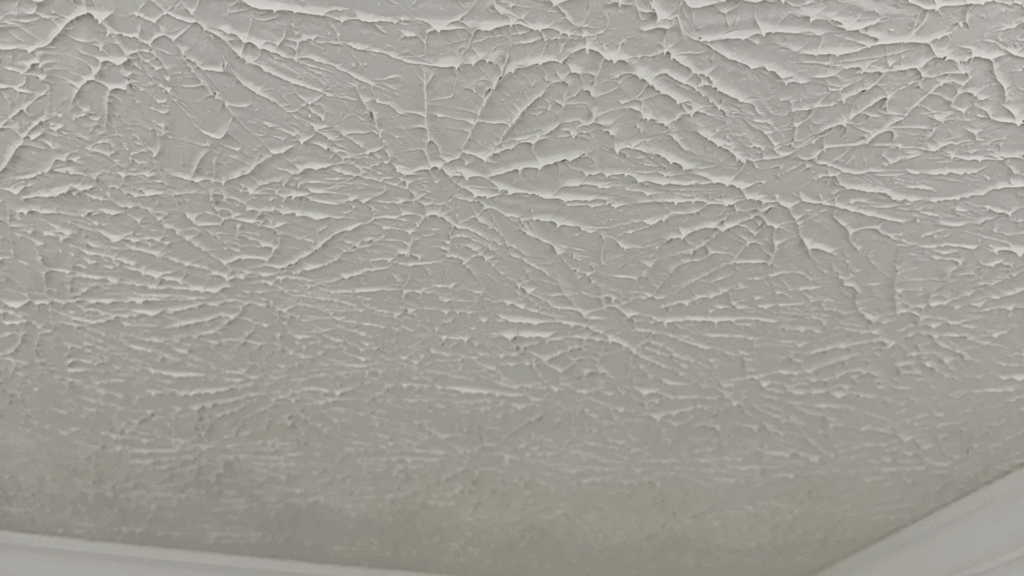
Stomp brush texture creates bold, dramatic patterns across the ceiling using a thick brush.
This technique results in a landscape of peaks and valleys that catch the light, making a strong visual statement.
It’s a great choice for spaces that want to stand out with a distinctive, eye-catching look.
Tips for Dealing with Textured Ceilings
Textured ceilings may look simple, but they come with their challenges. If you’re updating, repairing, or removing texture, these tips will save you time and effort.
- Painting Over Texture: Painting textured ceilings requires special tools. Use thick-nap rollers or spray paint to cover the bumps evenly. Apply multiple light coats for the best results.
- Repairing Patches: Repairing texture can be tricky. Practice on a hidden area first, and for larger repairs, consider hiring a professional to blend patches seamlessly.
- Removing Texture: Removing texture can be messy and complicated. If your home is older, check for asbestos. Wear protective gear, and consider hiring a professional for safety.
- Modernizing the Look: For a smoother look, try skim coating or installing ceiling panels. These options update your ceiling without complete removal.
- Maintenance Tips: Dust textured ceilings carefully with soft dusters or vacuum attachments. Avoid wet cleaning unless necessary, and use a slightly damp cloth to prevent damage.
Conclusion
Textured ceilings aren’t a design mistake; they’re a practical solution with character. Every bump tells a story about your home’s history and style.
While smooth surfaces are trending, don’t feel pressured to rip out your existing texture. Your ceiling is like a blank canvas. Whether you love the classic popcorn look or want a modern smooth finish, the choice is yours.
Budget matters most. Some updates are quick and cheap, others require professional help. Listen to your space, your wallet, and your personal taste.
If your ceiling works, keep it. If it doesn’t, you have options. No judgment, just smart home decisions.
Ready to look up and appreciate your ceiling?

